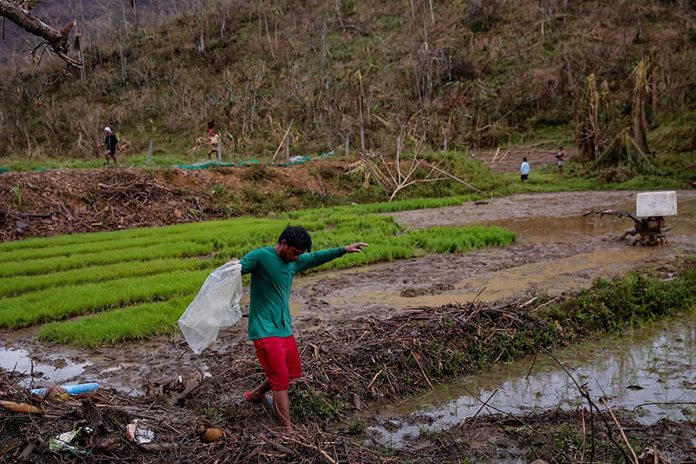
THE Philippines will have to import more rice in 2021 after losing about eight days’ worth of supply following the onslaught of three consecutive typhoons, Agriculture Sec. William Dar said Thursday.
Typhoons Quinta, Rolly and Ulysses which crossed Luzon within weeks of each other caused about P12.3 billion of damage in agriculture, said Dar. Rice accounts for some 39.2 percent of the total, he said.
“Presently, we can say that about eight days of rice consumption had been damaged and with our inventory, we still have 82 days to last, so marami po tayong bigas sa bansa,” he told ANC’s Headstart.
This refers to the total inventory of rice in the country including what’s kept with the National Food Authority, in households, and in private sectors starting Jan. 1, 2021. It is composed of both locally produced and imported rice.
Dar said the department was originally targeting 93 percent rice sufficiency next year, but with the recent typhoons, this will have to be brought down to only about 89 to 90 percent. The Philippines will then have to import the remaining 10-11 percent.
“Yes, that’s a given because we are not able to produce 100 percent yet,” he said.
Dar said one area that needs to be addressed is the 1.2 million hectares of rice fields that are yet to have a national irrigation system.
“Without that, I cannot see happening na ma-produce natin lahat ng pagkain natin (that we produce our entire consumption). So we have to enhance, accelerate the investment in terms of having to develop more irrigated areas,” he said.
The DA has an P8-billion budget for agricultural input for the dry season and is also gearing up to provide insurance indemnification of about P10,000 to P15,000 to affected farmers who are part of the program, he said.
Should there be no more typhoons expected to enter the Philippines, massive planting of crops may begin by the second week of December, he said.(ABS-CBN News)







